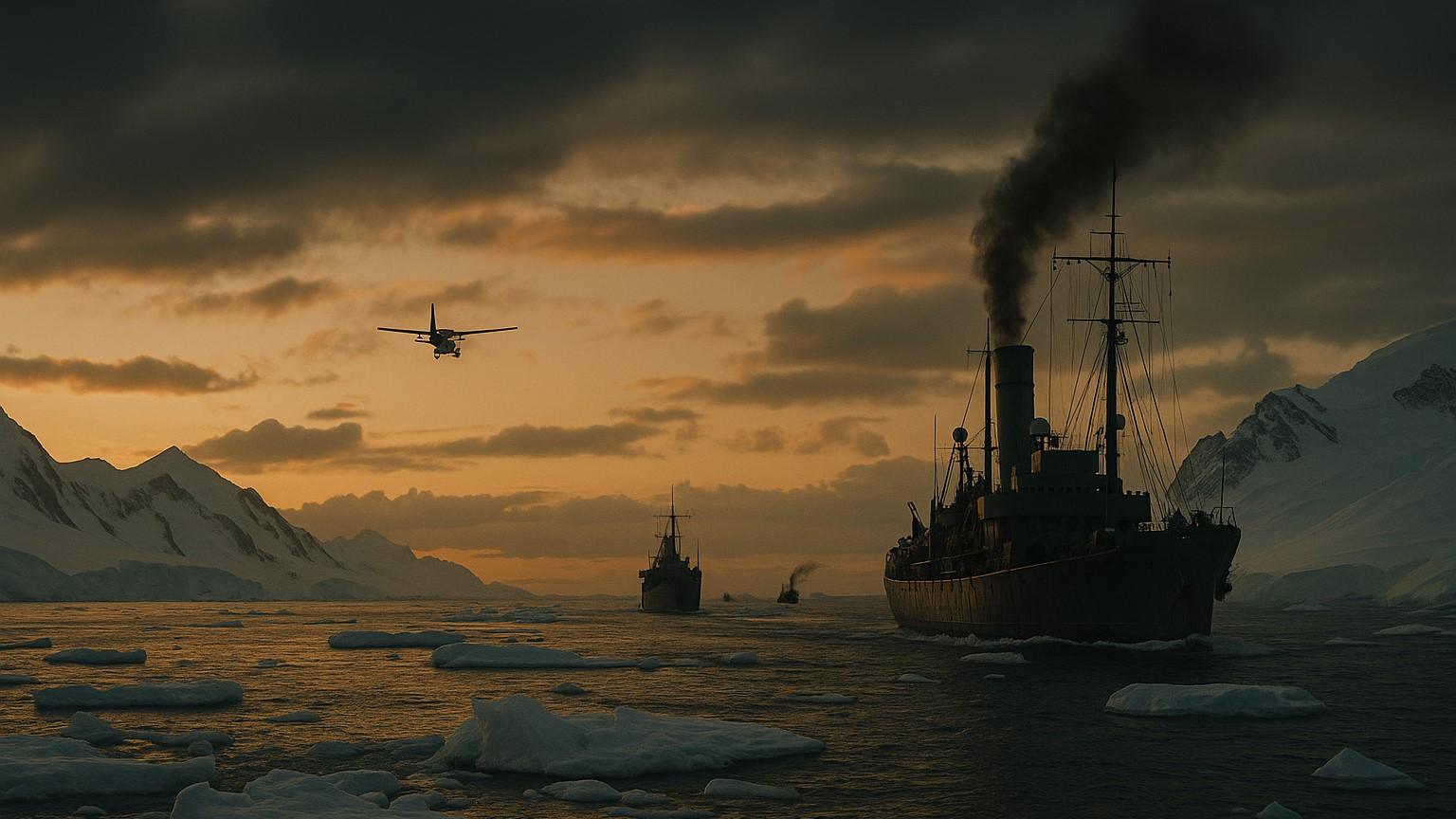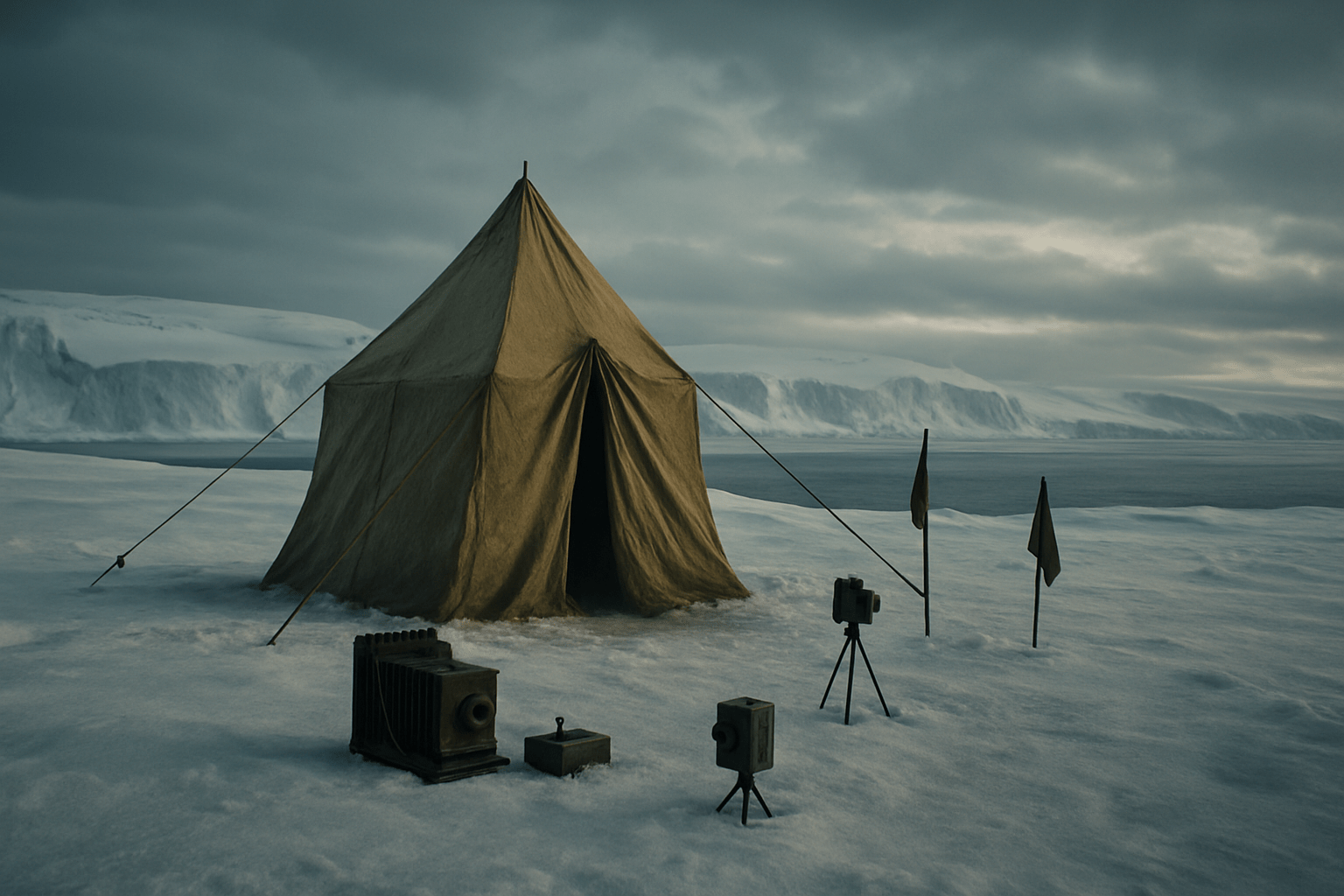For decades, rumors have swirled about the fate of high-ranking Nazis after World War II. One of the most enduring stories claims they escaped to a secret base in Antarctica. This tale blends mystery, history, and conspiracy, capturing imaginations worldwide. Yet, how does this story hold up against factual records and evidence?
Where Did the Antarctica Nazi Base Theory Begin?
To understand this myth, start with the real events near the end of World War II. As the Allies closed in on Germany, some Nazi officials tried to flee. Many escaped to South America, especially Argentina. Stories of these escapes are well documented and backed by evidence, including tracking documents and witness testimony.
However, the Antarctica theory is different. It stems from Nazi interest in Antarctica during the 1930s. In 1938–1939, Nazi Germany sent an expedition to a region they called “Neuschwabenland.” The team mapped parts of the continent, dropped flag markers, and surveyed for a possible whaling station. Official records show this mission focused on territory claims and resource scouting — not secret bases or invasion plans.
After the war, reports and rumors of a secret Antarctic base, sometimes called “Base 211,” grew. These grew wilder as Nazi defeat led to speculation about their leaders’ fate. Over time, these ideas appeared in books, magazines, and even documentaries. The theory found eager readers among those drawn to mystery and unsolved secrets.
The Real Nazi Antarctic Expedition
Nazi interest in Antarctica was not unique. Many nations had staked territorial claims, hoping to access natural resources. The German expedition’s goals, recorded in official documents, included:
- Mapping and aerial photography of unknown territory
- Claiming land for Germany
- Surveying whale populations for oil production
- Testing cold-weather equipment
The expedition lasted a few months. There is no evidence they built any large-scale base. Published photos and logs show tents and temporary camps, not bunkers or secret tunnels. Nothing in the record suggests later missions or an ongoing German presence in Antarctica during the war.
The Postwar Surge in Nazi Escape Myths
By the late 1940s, stories about secret Nazi escapes flourished. Some tales claimed Adolf Hitler survived and fled to hideouts across the globe. While the escape to South America has some basis in fact, the leap to a hidden ice fortress in Antarctica is one of the most extreme claims.
Part of the myth’s appeal lies in the continent’s remote, unexplored nature. With no towns, few visitors, and vast ice fields, Antarctica is ready-made for stories of hidden worlds. Sensational claims thrive where fact is hard to check.
But how did the myth gain such traction? A few key factors fueled its rise:
- Interest in UFOs and government cover-ups during the early Cold War
- Public fascination with Nazi science and rumors of “wonder weapons”
- Misinterpretation of real events like Operation Highjump

Operation Highjump: Fuel for the Fire
One of the biggest boosts for the myth came from Operation Highjump in 1946–1947. The U.S. Navy launched a huge expedition to Antarctica, led by Admiral Richard Byrd. The goals were mostly scientific, but the scale — more than 4,000 men, ships, and planes — led to wild speculation.
Some conspiracy theorists claimed Operation Highjump was really a military assault on a Nazi base. In reality, the operation aimed to:
- Test cold-weather equipment and military readiness
- Train personnel for polar conditions
- Establish a physical presence in Antarctica before the Soviets
- Map and photograph as much of the continent as possible
No reliable documents or evidence link Operation Highjump to any hidden Nazi activity. The expedition faced harsh weather, equipment losses, and logistical challenges, but found no secret bunkers or enemy forces. Despite that, the operation’s scale and abrupt end fed the sense of mystery.
The Role of Science Fiction and Conspiracy Theory
During the 1950s and beyond, new claims surfaced about Nazi UFOs, advanced submarines, or secret Antarctic strongholds. Magazines and books blurred the line between fact and fiction. Science fiction stories featured hidden underground lairs and escaped Nazis plotting revenge.
Some authors cited unverified “eyewitness” accounts or supposed secret documents. These stories grew ever wilder, connecting Nazi escapes to UFO sightings, ancient civilizations, or plots for world domination. None of these ideas have documentation in reliable historical records.
The theory entered pop culture, showing up in films, novels, and video games. With each telling, details shifted or grew — a pattern seen in most urban legends.
Investigating the Evidence
So what hard evidence supports the idea of a Nazi Antarctic base?
Despite decades of searching, none has turned up. There are a few reasons why:
- Antarctica is one of the most studied continents by global science teams since the 1950s. All regions, including Neuschwabenland, have been mapped, drilled, and surveyed. No Nazi base, wreckage, or artifacts have ever been found.
- All known Nazi flight and ship records from 1938–45 are public. No logs mention trips to Antarctica after the 1939 expedition.
- Postwar Nazi escapees have been tracked by historians, police, and journalists. Most fled to South America or the Middle East, where evidence is available.
Technology adds new certainty. Satellite imagery, ground-penetrating radar, and deep-ice drilling projects would have uncovered large underground bases, fuel caches, or aircraft remains if they existed.
Experts Weigh In
Most historians, polar researchers, and intelligence agencies agree: the Nazi Antarctic base claim lacks evidence. Leading Nazi researchers like Guy Walters and Richard Evans dismiss these tales as fantasy, pointing to the overwhelming documentation of Nazi movement elsewhere.
German engineer and polar scientist Cornelia Lüdecke has written that all physical remains from the 1938–39 expedition are accounted for. They include survey markers, flags, and film, but there is no sign of any attempt to build permanent structures.
The international Antarctic community — which includes scientists from dozens of countries — supports this view. Every known base, cave, and ice shelf has been mapped by multiple teams during fifty years of research. No Nazi ruins exist beneath the ice, and any frozen German technology would draw immediate scholarly attention.
The Science of Building in Antarctica
To better judge the claim, ask: could the Nazis even have built such a base?
Antarctic construction is difficult. In the late 1930s, few nations managed anything more than tents or wooden huts. Year-round living remained out of reach until the 1950s. Even today, building is hard — supplies must be shipped in, and structures must withstand months of darkness and minus-40-degree cold.
The German expedition in 1938–39 had limited resources. With only a few months on-site, no large machinery, and only temporary shelters, it had neither the time nor capacity to build an underground base. After returning home, Germany’s focus shifted to the war in Europe.
If they had left supplies for later use, science teams would have found them by now. Even abandoned Soviet and American bases from the 1950s have left clear traces in the ice. The idea that a massive Nazi complex could lie hidden when no evidence at all exists strains belief.
Other Nazi Escape Myths and Truths
The Antarctic myth is far from the only Nazi escape story. Many start with a grain of truth and grow as tales are repeated.
- Argentina and South America: These stories have some basis in fact. Thanks to sympathetic regimes and false documents, some Nazis reached safety in these countries. Adolf Eichmann, Josef Mengele, and other officers lived in Argentina, Brazil, or Paraguay for years before discovery.
- The Hitler Survival Theory: Although conspiracy theories resist the historical record, multiple investigations found no evidence that Hitler survived Berlin. Autopsy reports, witnesses, and Soviet records match what we know about his final days.
- The “Last U-Boat” Stories: Some tales focus on German submarines sailing to remote locations after the war. While a small number of U-boats escaped at the end of the conflict, records show they were mostly captured, scuttled, or surrendered in safe harbors. No submarines are unaccounted for in Antarctic waters.
These stories show the human appetite for mystery and the desire to fill information gaps with dramatic tales, especially when history’s villains vanish from sight.
Why Do Myths Like the Antarctic Nazi Base Persist?
Why does the idea of a secret Nazi outpost in Antarctica linger, despite lack of evidence?
Several factors combine to keep this story alive:
- The power of the unexplored: Antarctica is still mysterious to many people. The less familiar a place, the easier it is to imagine secrets hiding there.
- Appeal to conspiracy: Grand, hidden plots have always attracted interest. Stories of cover-ups or secret technology play into wider suspicions about government and authority.
- Nazi fascination: The regime’s real history of secret projects, advanced weapons, and brutal secrecy feed the sense that there could always be “one more” hidden story.
- Pop culture influence: Films, novels, and games repeat and amplify these ideas, sometimes blurring the line between real history and fiction.
Add modern communication and the internet, and these tales reach new generations, often stripped of their original context or evidence. Outlandish claims get repeated more than simple, boring truths.
What Do Antarctic Researchers Say?
If you visit a modern Antarctic science station, you will meet people who have spent months or years in the remote wilderness. Ask them about Nazi bases, and most will smile. For decades, survey teams from the U.S., Russia, Germany, Australia, and China have crossed the desert of ice by foot, plane, or over-snow vehicles.
The vast white expanse is closely mapped and mapped again every year for climate, biology, geology, and physics studies. Any anomaly — metal debris, construction remnants, or even traces of World War II-era materials — would attract global interest. None have been verified.
Some researchers even examine the environment for microplastics or buried pollutants from abandoned research huts. In such a well-monitored landscape, it is highly unlikely for any large lost structure to remain hidden.
The Value in Questioning Old Stories
While the story of a Nazi Antarctic base entertains and excites, checking the facts reveals something better — a genuine record of human adventure, missteps, and discovery. The true achievements of polar explorers, scientists, and rescue crews offer lessons of their own. They show courage, dedication, and creativity under pressure, not hidden tyranny beneath the ice.
Truth often lacks the dramatic twist of legend, but it provides a richer, more solid foundation. Examining myths with honest questions brings fresh appreciation for the astonishing real history of the Antarctic — and reveals how stories can take on a life of their own, growing far beyond their origins.
Ultimately, when you read about mysterious Nazi bases in Antarctica, remember that history’s real mysteries can teach far more than its inventions. By looking deeper, you gain not only truth but also a greater sense of wonder about the world and its stories.




